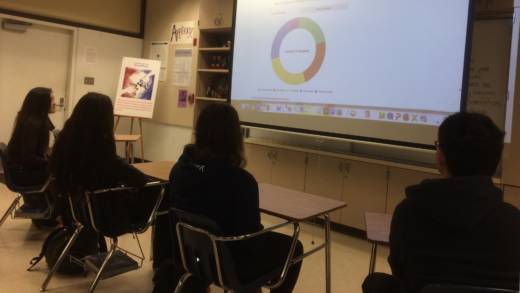Its versatility exemplified for teachers who want to add current events into any content area. Each edition has a number of embedded resources within densely informative text. Take a look at the last edition I used in my psychology classes regarding consciousness, which I will use later in the year with my government classes regarding policy, “Does your school start too early in the morning?”
Wide Array of Excellent Resources
Matthew Green produces and edits “The Lowdown” and often collaborates with “Above The Noise.” “Above the Noise” is a new YouTube video series produced by KQED that supplements “The Lowdown” by cutting through the hype around controversial issues.
Another regular aspect to “The Lowdown” are the substantial, but flexible lesson plans written by Rachel Roberson. “The Lowdown” — combined with its informative text, engaging and instructive videos, other interactives like graphs, comics, and maps, alongside the lesson plans — gives teachers all the resources they need to allow their students to get depth in and work with the issues. This wealth of materials is what allows teachers from all content areas to see “The Lowdown” as a go to resource.
Substantial Text and Video
Whenever I use a new resource, I have to personalize it some way. The first thing I do is read or watch it and create a corresponding set of questions for my students geared toward how I want to use the resource. Before using the “Does your school start too early?” edition, I created a set of how/why questions for both the video and the text that references the interactives that I want my psychology students to see. I also do it to make sure that I know what I want my students to get out of the resources. The questions give the class a common set of information that will act as the basis for a class discussion after I have perused the students’ answers and seen what they have for the discussion.
Flexible Lesson Plan
The lesson plan is great for its depth which allows it to be used in a number of different settings, timings and content areas. The lessons follow the same template:
- Opening Quick Write
- Objective
- Central Question with Context
- Vocabulary Break Down
- Investigate (with stop times for video discussions)
- Make and Share
- Assessment/Reflection
- Extension/Homework
- Common Core and NGSS Standards
The level of specificity and the common template allow teachers to pick and choose how they would like to modify the resources for their classroom. I used the lesson plan as the backbone of my lesson with my students. Even though I created my own questions, I focused on the objective, used the “Investigate” for the video, the “Make and Share,” and the “Reflection.” I also use the “Extension” with my government classes as it connects to policy questions.
Favorites
My favorite aspects to the lessons are the quick write, make and share, and the extension. I use them to make sure my students write everyday, but also are able to get their opinions out in the world and they have an option to take their opinions to the next level. As mentioned above, I usually create my own questions, but I also use the lesson’s questions to get started. The make and share revolves around Disqus comments or we have used Twitter to get our ideas out into social media. Finally, the extensions allow the students to apply their opinions to the real world. In my government class, we’ll actually contact school board members to survey their understandings and opinions of start times.
“The Lowdown” is a great resource for teachers of any content area. There are social studies, English, science and math issues that bring current events into any classroom. Try “The Lowdown” and let me know what you think. I think you’ll agree that it’s a great resource for your classroom.
